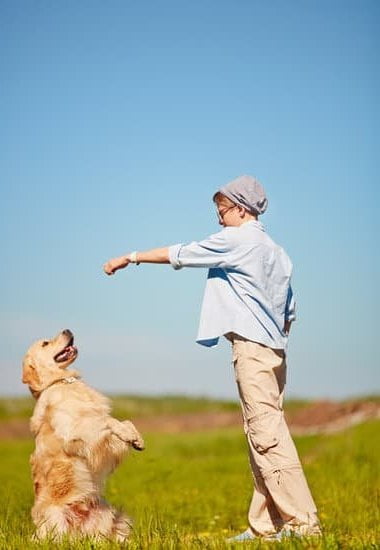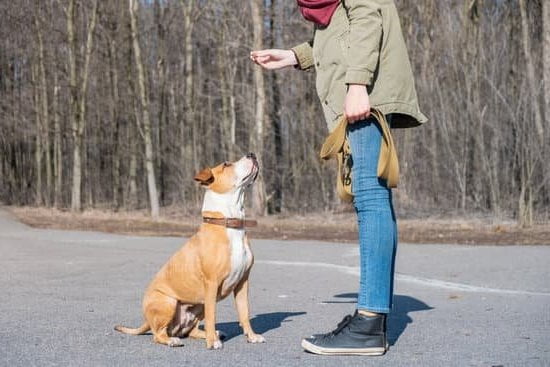There are many reasons to crate train your dog. Perhaps the most important reason is that a crate provides a safe and comfortable place for your dog to rest and relax. Dogs that are crate trained are less likely to have accidents in the house and are less likely to chew on furniture or other belongings.
Another important reason to crate train your dog is that it can help with house training. A crate can be used as a place for your dog to go to the bathroom until he or she is properly house trained.
Crate training can also help your dog to feel safe and secure. Dogs that are crate trained are less likely to become anxious or stressed when left alone.
If you are planning to travel with your dog, crate training is essential. A crate can provide a safe place for your dog to stay while you are away and can help to prevent accidents in the car.
Ultimately, the decision to crate train your dog is up to you. But, there are many benefits to crate training that should not be ignored.
Basic Training Dog Crate
A dog crate is a great way to housebreak your dog and helps with obedience training. Dogs instinctively want to keep their den clean, so a crate can be a powerful training tool.
When you first get your dog, put him in the crate for short periods of time and gradually increase the time. Feed your dog his meals in the crate and put him in there when you’re not able to watch him.
Make sure your dog has a comfortable bed or blanket in the crate and plenty of water. When housebreaking your dog, take him outside frequently and praise him when he eliminates outdoors.
A dog crate can also be a place of refuge for your pet. If he’s feeling overwhelmed or scared, he can retreat to his crate for some peace and quiet.
Crate Training An Anxious Dog
There are a lot of reasons that an owner might choose to crate train their dog. Maybe they need to be crated when they can’t be supervised, or maybe the dog has a bad habit of tearing up the furniture when left alone. But one of the main reasons people crate train their dogs is because the dog is anxious or fearful when left alone.
Crate training can be a great way to help an anxious or fearful dog feel more secure. The crate becomes like a “safe place” for the dog, and they will often relax and even nap in it when left alone.
The first step in crate training an anxious dog is to make the crate a positive place. Start by putting some treats or toys in the crate, and letting the dog explore and get used to it. Once the dog is comfortable going into the crate, you can start closing the door for short periods of time. Start with just a few seconds, and gradually increase the amount of time the dog is left in the crate.
If the dog starts to get anxious or stressed, go back to a shorter time period until they are comfortable again. It may take a little longer for some dogs, but eventually they will learn to relax in the crate when left alone.
How To Dog Crate Train
Your Puppy
Crate training a puppy is a very effective way to housetrain your dog and can be a positive experience for both of you. The crate should be just large enough for your puppy to stand up, turn around and lie down in comfortably.
When you first start crate training, put the crate in a quiet, comfortable spot in your home and put a soft blanket or towel in it. Feed your puppy his meals in the crate, and give him water and toys to play with. As your puppy becomes more comfortable with his crate, you can begin to close the door for short periods of time.
If your puppy cries or barks in the crate, don’t respond. He will eventually learn that whining and barking won’t get him out and will stop doing it.
Once your puppy is comfortable being in the crate for short periods of time, you can start leaving him in there for longer periods of time. But always remember to take him out for a bathroom break immediately after letting him out of the crate.
If you follow these simple steps, you can crate train your puppy in no time!
How To Train Dog To Like Crate
There’s a reason crates have been used for centuries to train dogs. They’re an incredibly effective way to get your dog to willingly and happily enter his crate, and they make housetraining much easier.
The key to success is to start crate training when your dog is young – ideally when he’s just a few weeks old. If you wait until your dog is older, he may be resistant to the idea of spending time in his crate.
Here’s how to get started:
1. Introduce your dog to the crate gradually. Put a soft blanket or towel in the crate, and let your dog explore it on his own. Don’t force him to go inside if he doesn’t want to.
2. Once your dog is comfortable going into the crate, start feeding him his meals inside the crate. This will help him associate the crate with something positive.
3. Begin closing the door to the crate while your dog is eating his meals. As he becomes more comfortable with this, gradually increase the amount of time the door is closed.
4. Once your dog is comfortable eating in the crate with the door closed, start having him spend short periods of time inside the crate. Gradually increase the amount of time he spends in the crate, but always make sure he’s comfortable and has access to water.
5. If your dog is resistant to the crate, start by putting him in for short periods of time (5-10 minutes) and gradually increase the time. Never use the crate as a punishment – this will only make your dog dislike it.
The key to successful crate training is to be patient and take things slowly. If you follow these tips, your dog will soon learn to love his crate!

Welcome to the blog! I am a professional dog trainer and have been working with dogs for many years. In this blog, I will be discussing various topics related to dog training, including tips, tricks, and advice. I hope you find this information helpful and informative. Thanks for reading!





